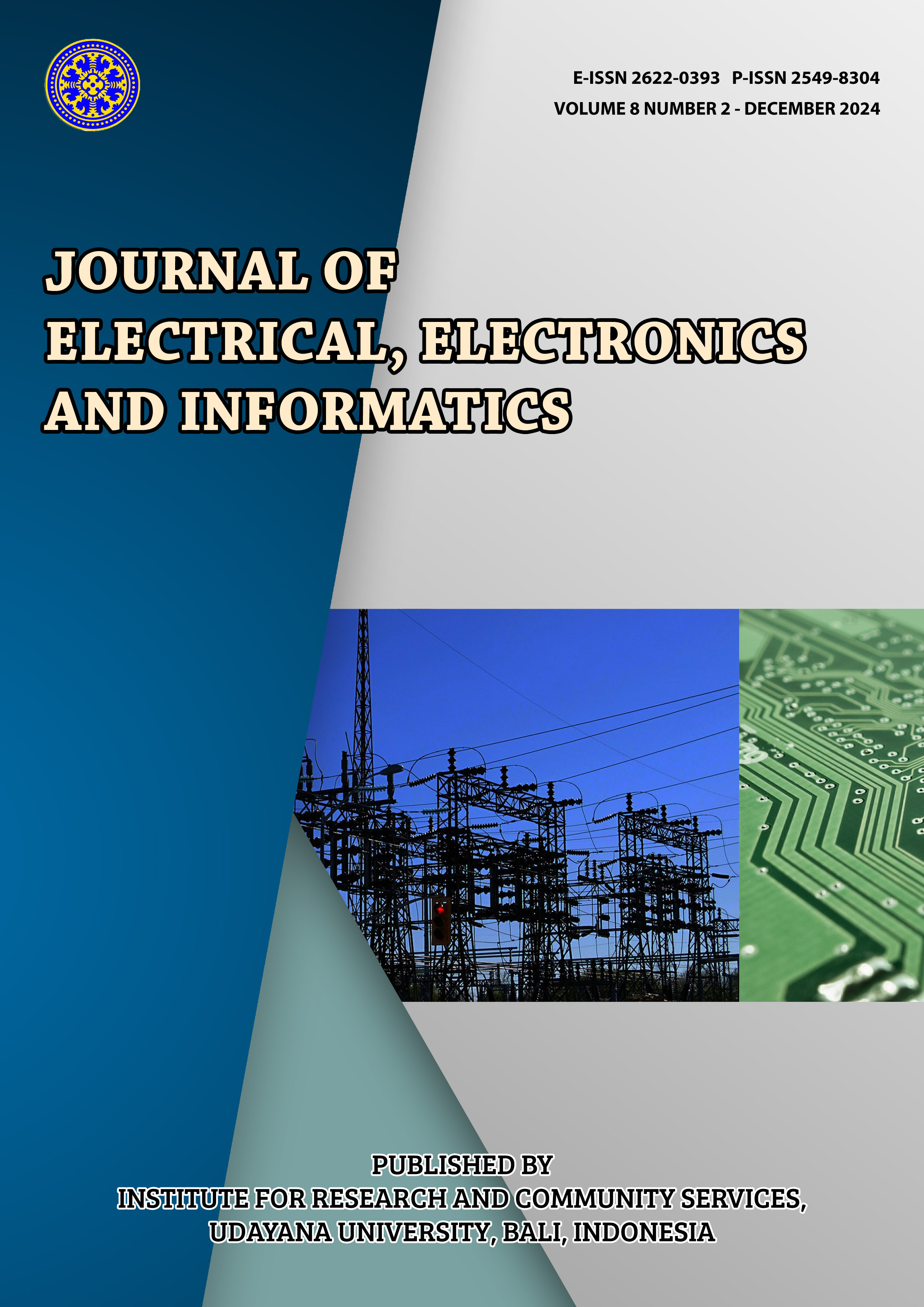Analysis of Dentist Practice Information System with System Usability Scale (SUS) Method
Abstract
A dental practice located in the Jimbaran area recently launched a website to support its services. Based on observations, it was found that the current issue is that the dental practice's information system website is new and has not yet been tested for service quality from the user's perspective. Usability testing of the website is crucial because one of the factors that influence the success of a website is its usability. Usability testing is conducted to evaluate the website based on user needs. The respondents consisted of one dentist, one admin, and 38 patients who visited the dental practice. The application of the System Usability Scale (SUS) method to test the usability of the website by its users involves several stages, including creating the SUS questionnaire, allowing respondents to use the website directly, collecting data by distributing questionnaires to users directly, processing respondent data, analyzing the data, and following up on the results obtained. The measurement results of the website using the System Usability Scale (SUS) method showed an average score of 80.6. For the Acceptability Ranges version, the website was deemed Acceptable. The Grade Scale result from the user's acceptance level was classified as Grade B. The Adjectives Rating version categorized it as Excellent, and the score obtained was above average
Downloads
References
[2] Marthilla, V., & Kurniadi, D., “Sistem Informasi Manajemen Praktek Dokter Gigi (Studi Kasus : Tempat Praktek Drg. Uciria Halim Padang),” Jurnal Pendidikan Tambusai, vol. 5, no. 2, pp. 5378–5386, 2021, doi: 10.31004/jptam.v5i2.1780.
[3] Zulfidiana, Husna Yunardi, & Mutiawani, V., “Rancang Bangun Aplikasi Pengujian Usability Berbasis Web,” Journal of Informatics, Information System, and Artificial Intelligence, vol. 1, no. 1, pp. 58-71, Mei 2023, doi: 10.24815/j-sign.v1i01.31805.
[4] Aprilia, N., Purwaningsih, E., & Marjianto, A., “Perilaku ibu dalam menjaga kesehatan Gigi dan mulut dimasa kehamilan,” Jurnal Skala Kesehatan, vol. 13, no. 1, pp. 59–63, Januari 2022, doi: 10.31964/jsk.v13i1.344.
[5] Komalasari, D. & Ulfa, M., “Pengujian Usability Heuristic Terhadap Perangkat Lunak Pembelajaran Matematika,” MATRIK : Jurnal Manajemen, Teknik Informatika dan Rekayasa Komputer, vol. 19, no. 2, pp. 257–265, May 2020, doi: 10.30812/matrik.v19i2.687.
[6] Santoso, I., & Sanjaya Abdillah Karim, “Rancang Bangun Knowledge Management System Politeknik Statistika STIS,” Jurnal Informatika: Jurnal Pengembangan IT, vol. 4, no. 2, pp. 112–119, May 2019, doi: 10.30591/jpit.v4i2.1133.
[7] Revythi, A., & Tselios, N., “Extension of Technology Acceptance Model by using System Usability Scale to assess behavioral intention to use e-learning,” Education and Information Technologies, vol. 24, no. 4, pp. 2341–2355, 2019, doi: 10.1007/s10639-019-09869-4.
[8] Sugiyono. (2018). Metode Penelitian Kuantitatif (1st ed.). Alfabeta.
[9] Ukkas, M. I., “IMPLEMENTASI SKALA LIKERT PADA METODE PERBANDINGAN EKSPONENSIAL UNTUK MENENTUKAN PILIHAN ASURANSI,” Seminar Nasional Sistem Informasi Indonesia, pp. 99–104, November 2017. Available: https://is.its.ac.id/pubs/oajis/index.php/file/download_file/1751.

This work is licensed under a Creative Commons Attribution-ShareAlike 4.0 International License.











